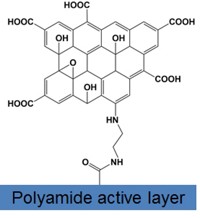Advertisement
Grab your lab coat. Let's get started
Welcome!
Welcome!
Create an account below to get 6 C&EN articles per month, receive newsletters and more - all free.
It seems this is your first time logging in online. Please enter the following information to continue.
As an ACS member you automatically get access to this site. All we need is few more details to create your reading experience.
Not you? Sign in with a different account.
Not you? Sign in with a different account.
ERROR 1
ERROR 1
ERROR 2
ERROR 2
ERROR 2
ERROR 2
ERROR 2
Password and Confirm password must match.
If you have an ACS member number, please enter it here so we can link this account to your membership. (optional)
ERROR 2
ACS values your privacy. By submitting your information, you are gaining access to C&EN and subscribing to our weekly newsletter. We use the information you provide to make your reading experience better, and we will never sell your data to third party members.
Analytical Chemistry
Written In Bacteria
Synthetic Biology: Nanolithography technique can now write with bacteria-containing ink
by Katharine Sanderson
October 8, 2012

Researchers have made possible ‘writing’ with bacteria, thanks to their adaptation of a technique already used to write with proteins, polymers, and other nano-sized molecules (J. Am. Chem. Soc., DOI: 10.1021/ja3073808).
Dip-pen nanolithography uses the tip of an atomic force microscope (AFM) to place molecules at researcher-chosen points on a surface. To use the technique, a researcher dips the microscope’s tip into a solution containing the molecules, and a water meniscus less than a micrometer wide forms between tip and the writing surface. The molecules in the solution then diffuse through the meniscus onto the surface substrate.
Researchers have used the technique to write patterns of DNA, small proteins, and other molecules smaller than around 100 nm long. But bacteria, which are micrometers long, would not fit in the water meniscus that is crucial to dip-pen nanolithography’s success.
Jung-Hyurk Lim at Korea National University of Transportation wanted to be able to write with bacterial cells because he and other researchers would like to design biosensors and other devices that rely on precise positioning of the microbes. To draw patterns of Escherichia coli, he and his team realized they had to design both a new type of AFM tip and a liquid that could hold the microorganisms.
They coated their AFM tip with poly(2-methyl-2-oxazoline), a polymer that forms a hydrogel. In 2010, they had developed this hydrogel-coated tip to deposit large viruses on a surface (Angew. Chem. Int. Ed., DOI: 10.1002/anie.201004654). The hydrogel coating acts like a sponge, swelling as it soaks up large particles such as viruses or bacteria. This gel, rather than a narrow water meniscus, then makes contact with the substrate. The gel also helps push the viruses or bacteria out onto the writing surface because it repels biomolecules.
The researchers also had to find a way to keep the bacteria healthy and avoid drying them out during the writing process. So the team carefully selected the liquid ‘ink’ carrying the bacteria to keep them away from air and surrounded by water. They used a mixture of glycerol, which has a high boiling point to prevent evaporation, and an aqueous solution of the amino acid tricine, which accelerates deposition onto the surface. The researchers could control how many bacteria they deposited by changing the ratio of glycerol to tricine, and thus the viscosity of the ink. A thicker ink, they found, holds more bacterial cells onto the tip and stamps more onto the surface in each spot.
The team tested their AFM setup with two inks – one with 10% glycerol and the other 20% glycerol, and both containing fluorescently labeled E. coli. The researchers used two labels: a green dye that fluoresced if the bacteria’s cell wall was intact, indicating the cells were alive, and a red dye that fluoresced if the cell walls ruptured and the cells were dead. The ink with more glycerol gave 13-µm-wide spots on an amine-functionalized silica surface, each containing 7 or 8 cells. The cells glowed green, showing that they had survived. With the 10% glycerol solution, the researchers made smaller dots of single bacterial cells.
Khalid Salaita at Emory University says that Lim’s technique will open up possibilities for synthetic biology researchers who want to design complex arrays of bacteria as tools to drive specific chemical reactions. Previously, researchers could place bacteria on templated surfaces, but templating works with only one kind of bacteria at a time. Thanks to Lim’s work, dip-pen nanolithography can pattern several species of bacteria and allow researchers to see how they interact, Salaita says.
“It will be really interesting to see what other people do with this,” he says.



Join the conversation
Contact the reporter
Submit a Letter to the Editor for publication
Engage with us on Twitter